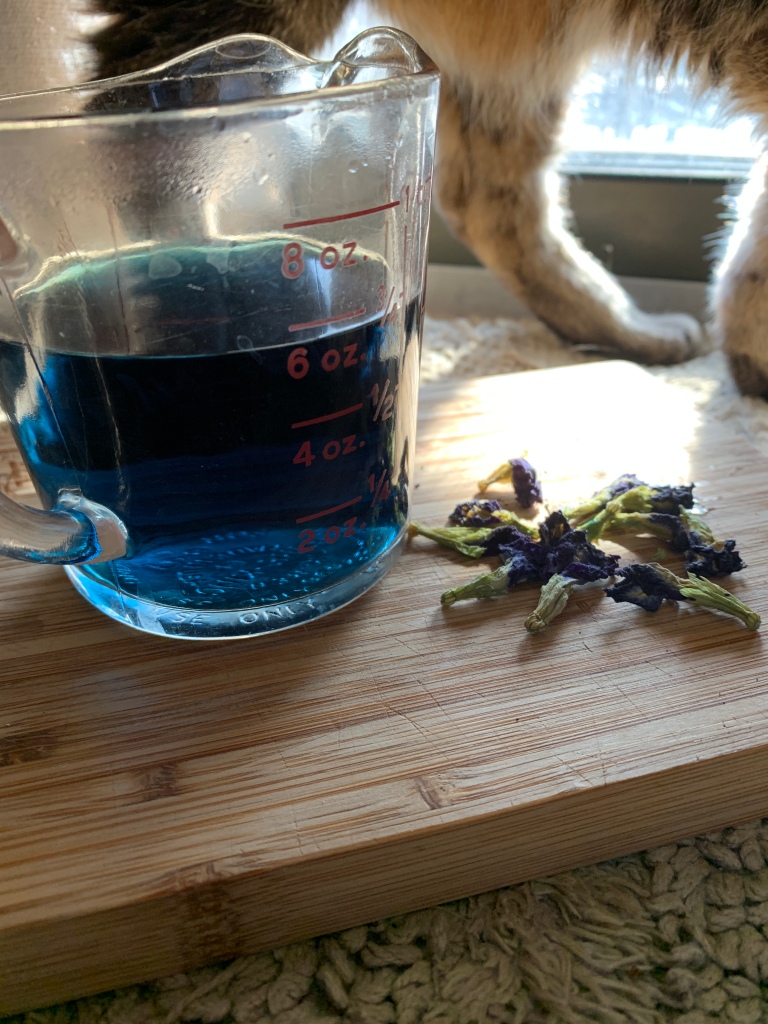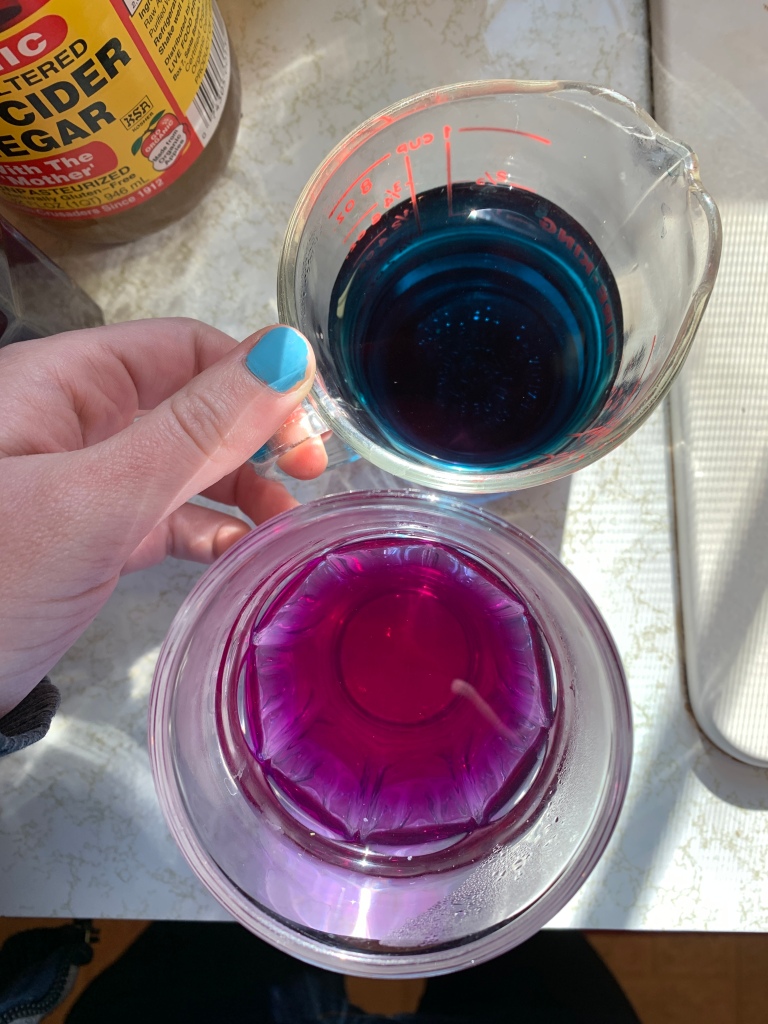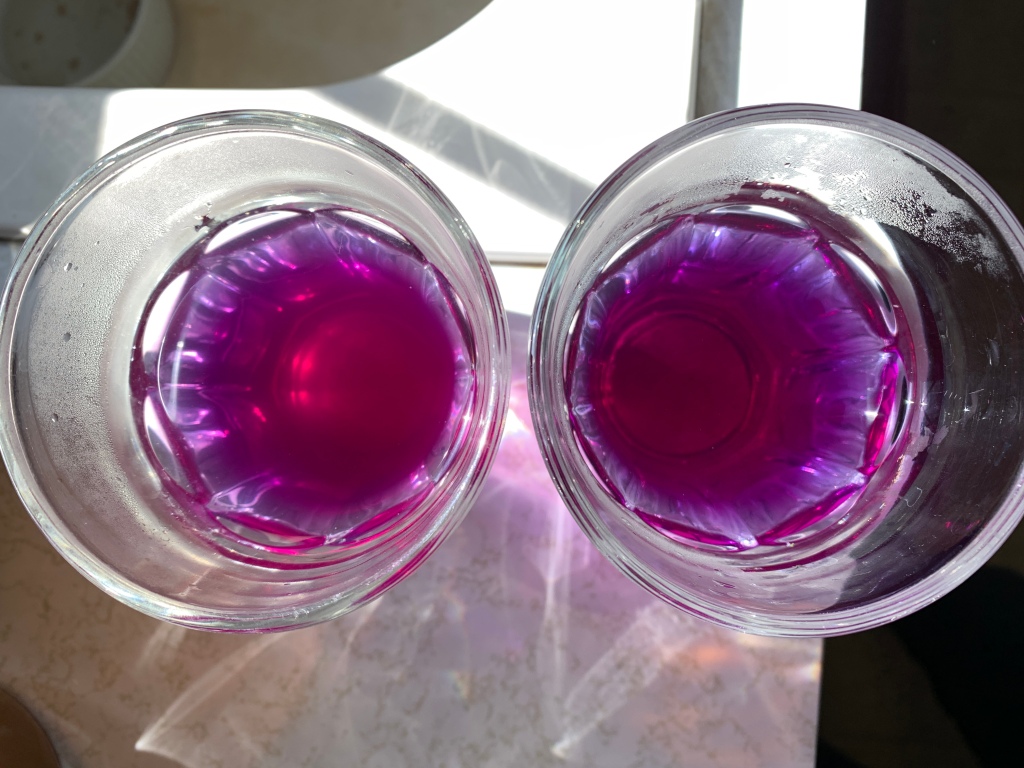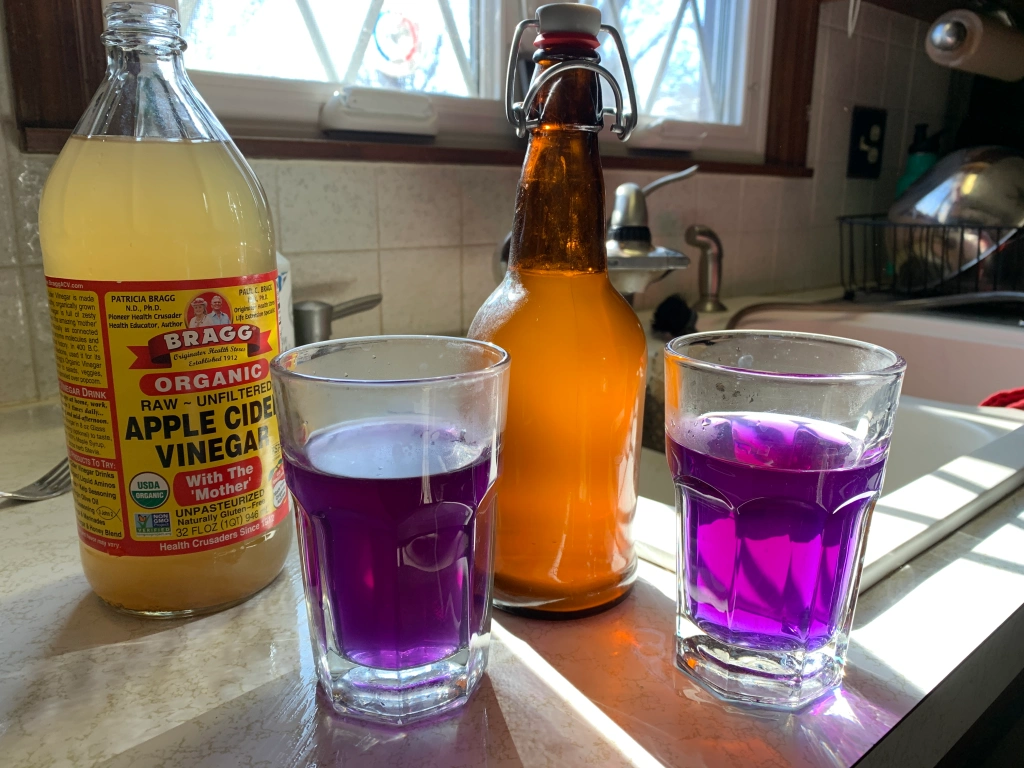
I’ve been experimenting with making my own apple cider vinegar lately – on the surface, it seems very straightforward: ferment apple cider into vinegar. But, how do you know when it’s done, or that it’s actually vinegar and, therefore, actually beneficial?
Apple cider vinegar has so many health benefits as well as cleaning uses. It helps regulate blood sugar levels, is a natural disinfectant, contains gut-boosting bacteria strains as a fermented product, and might even boost weight loss. And while ACV can be expensive at the store (costing 25 cents per ounce), it’s incredibly easy to make at home for the cost of a few apple cores.
My mixture is a jar half full of organic apple scraps (peels, cores, you name it), filled to cover with water and 1/4 cup of sugar to provide food for the natural yeasts on the apples. Yeasts consume sugar and excrete alcohol, so letting them feast on all the sweet stuff is a necessity. To speed up the process, I tossed in some Bragg’s ACV (known for containing the mother, a group of established bacteria that help kick the fermentation process off). Then, it’s time to wait!
After the bubbling concludes (4-6 weeks), remove the apple scraps and let it continue to ferment and age past the alcoholic cider level to the vinegar level. But, this is the point makes me nervous – how do I know when it’s actually done, and that I’m not just scrubbing my counters with alcoholic cider? It tastes acidic and sharp, but definitely not identical to something like Bragg’s ACV. It was cloudy, which is what I expected to see if it’s growing a mother, but also did not have the expected cloudy, film-like top that would indicate it had achieved full mother-status.
An idea struck us this weekend – rather than wondering if my homemade ACV is vinegar, why not compare it to other vinegars and try to test what’s happening?
Surely, a quick way to test my vinegar would be with a pH strip – vinegar should be at a lower pH level than wine or beer, so this would help distinguish where we are in the process of aging/fermenting. l I searched the house high and low for a pH test strip – I thought I had some buried from kombucha work, but no luck. I found some at the grocery store…for the pretty price of $12. And then we remembered what we have in the cabinets – butterfly pea flower!

This beautiful, deep-blue flower that grows on a particular variety of pea can be used to dye things a brilliant shade of blue, and we’ve been playing with dried butterfly pea flower at the restaurant to make cocktails. Butterfly pea flower, when used in an acidic state, is brilliant blue, but add levels of acid to it and you gradually turn it pinker as it responds to the acidity change. The cocktail we made with it was nicknamed the hydrangea, because hydrangeas depict the acid change of soil through the colors of their petals.

I made an infusion with the butterfly pea flower and hot water to make a tea (bright blue). At the restaurant, we would use lemon juice (i.e. citric acid) to alter the chemical composition of the blue drink to a bright pink, and luckily, lemon juice and vinegar are actually very close to each other in pH levels.
0: Hydrochloric acid
1.0: Stomach acid
2.0: Lemon juice
2.2: Vinegar
3.0: Apples, soda
4.0: Wine, beer
5.0: Black coffee
6.6: Milk
7.4: Human blood & tears
8: Seawater
11: Ammonia
12.4: Lime (calcium hydroxide)
I had Bragg’s ACV on hand, so I split my butterfly pea tea into two batches so I could compare my homemade apple cider vinegar against something I knew definitively was apple cider vinegar. I added an ounce each to the cups, and in a blink of an eye, I had my results!

I had achieved vinegar status! YES! Upon close examination, I think my ACV might be a smidge under-done (on the right, ever-so-slightly more purple/blue), so I’ll have to let it go a couple of more weeks, but at least I know that I haven’t been dumping cider into my smoothies every morning.
Nature can provide us with so many fixes and options, if only we know where to look for it – and butterfly pea flower can be such a pretty fix to play with!



does salt nuetralize it to a clear liquid
LikeLike
Ooh, good question! I may have to experiment!
LikeLike